Table Of Contents
There have been many times I asked myself this question: If I survived a holocaust of some sort — like say a zombie apocalypse or a nuclear fallout — and there was only one semi-auto handgun caliber left in the world, what would that be for me? The 357 SIG vs. 9MM?
If I Could Only Have One Gun?
- Would I pick the 9mm because there might be stockpiles of ammo left everywhere?
- Would I settle for the .380 acp which, with its really low SAAMI pressure limit, shouldn’t be too difficult to build a gun for as I could just use junk metal pipes?
- Would I pick the 10mm for its .41 magnum ballistics, and for the possibility of setting up a great dual-caliber system in the Glock 20 (because I could use .40 S&W in the same gun) even if it would be next to impossible to find ammo or brass for it?
- Would I pick the .45 acp because I’ve always been in love with it, and that most 1911s chambered for it can be converted to the mighty .460 Rowland with just a swap of barrels and recoil springs?
- Or would I pick the .357 SIG because… I don’t know, maybe the holocaust would leave me a little messed up in the brain and I wouldn’t mind picking it because… aargh! I probably wouldn’t because I like the .38 Super and the 9×23 Winchester better… then again maybe I would?
Maybe if I compare the most common handgun calibers two at a time and record all my thoughts, I’d be able to figure out what the answer to the above question is.
What Gun Caliber is Better Disclaimer:
I do not intend to start another argument over which caliber is better — a lot of “gun experts” have been debating on these topics since Internet gun forums and message boards started becoming popular in the early 2000s, and I will not add to anyone’s pain or pleasure. This will be a very subjective comparison based on my own logic and experience, and my opinions do not reflect those of the other contributing authors of Gun News Daily.
So please do not take this article too seriously.
The 9mm vs. The .357 SIG
In this article I will be comparing two kinds of similar but very different handgun calibers: the 9×19 Parabellum and the .357 SIG.
Both were designed for semi-automatic handguns, both use a projectile that has a diameter of 355/1000 of an inch, and with modern bullet designs, i.e. jacketed hollow points (JHPs) and jacketed soft points (JSPs) both can be great man-stoppers.
Where the 357 Sig vs 9MM differ greatly are their bullet velocities, their case dimensions and some would argue, what they can be used for.
The 9mm’s Story
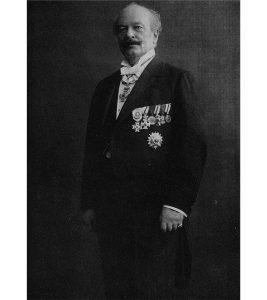
Not long after, he designed the 9×19 Parabellum cartridge that would use a .355-inch bullet. It would later supersede the then dominant but relatively smaller .309-inch bullet in the 7.65x21mm Parabellum.
Looking at the 7.65x21mm’s and the 9x19mm’s ballistics performance, it’s obvious that the former is superior. I can only assume Georg was tasked to redesign the 7.65x21mm and come up with the 9x19mm because of a few possible reasons:
- Back in those days, hollow points for use in handguns would have been very difficult to mass-produce for war.
- Even if hollow points for handguns were easier to mass-produce. The Hague Convention of 1899 wouldn’t have allowed for such bullets to be used for war;
THE 9X19MM PARABELLUM TODAY
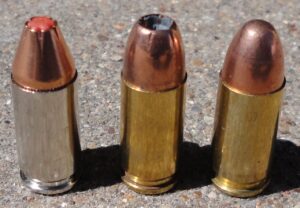
Its tapered brass that can withstand a SAAMI pressure limit of 35,000 psi (241 MPa). It is quite tiny and allows for typical single-stack magazines designed for its arguably biggest rival, the .45 acp, to hold up to 22% more ammo.
The high-pressure rating of the brass can also push the typical 115-grain .355 caliber projectile out of a 4.65-inch barrel with muzzle velocities of up to 1,180 feet per second. The relatively small cross-sectional surface area of the bullet (diameter) allows it to penetrate solid objects quite well.
And since it’s only been popular for, well, close to a hundred years (if we consider that it only really became widely accepted after World War I), guns and ammo availability for this caliber will never be an issue.
It’s still in use today in several countries’ military and law enforcement. The 9mm would probably continue to be a popular choice for handgunners for a hundred years more, notwithstanding threats from new contenders like the wildcat .22 Tuason Craig Micromagnum (.22 TCM) and the still unnamed 7.5mm cartridge for what is arguably the most powerful semi-automatic production handgun yet, the 7.5 FK BRNO.
The .357 SIG’s Story

Elmer Keith, an Idahoan gun nut among other things, got it right when he decided to hot-load the .38 Special for use in some of Smith & Wesson’s .38-caliber revolvers built originally for the .44 S&W Special.
His experiments led to Smith & Wesson developing a powerful new cartridge in 1935, capable of pushing a .357-inch 125-grain bullet out of a 4-inch barrel at speeds of at least 1,450 feet per second and producing more than double the .38 Special’s muzzle energy.
The brass was made 1/8-inch longer so it wouldn’t fit inside the weaker .38 Special revolvers’ chambers to avoid catastrophic results, and in 1935 it was christened the .357 S&W Magnum. In that same year the Smith & Wesson Registered Magnum (M27) was born.
.357 Magnum is Born
The .357 magnum was so awesome that SIG Sauer, a Swiss-German firearms manufacturer, attempted to duplicate its ballistics when fired from a 4-inch barrel revolver by cutting the 10mm Auto’s case and necking it down to accept a .355-inch bullet (the same projectile for the 9mm).
Sig 357 Advantages
The new cartridge was designed to be used for semi-auto pistols because of the platform’s inherent advantages over revolvers:
- More ammo capacity in the semi-auto magazine vs. 6 to 8 rounds in the revolver chamber (this is true for wide-body semi-autos that use double-stack mags);
- No forcing cone as barrel and chamber are on the same piece of metal and work as one (velocity loss in revolvers are not present in semi-autos);
- Faster reloading time (because revolver speedloaders are no match for double-stack mags);
- Easier concealment by nature of semi-autos not having the “bulging” profile of the revolver’s cylinder.
In 1994, it was introduced as the .357 SIG.
THE .357 SIG TODAY — A SOLUTION TO A NON-EXISTENT PROBLEM
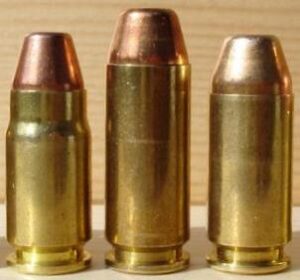
Because it didn’t really catch on as far as popularity, partly due to it being released just a few years after the .40 S&W and partly due to it not really having any practical advantages over other more established handgun calibers, ammo availability tends to be an issue in some states.
357 Sig Cons
- The .357 SIG pushes a 125-grain bullet out of a 4.5 inch barrel at velocities reaching up to 1,450 feet per second. This effectively duplicates factory .357 magnum loads fired from a 4-inch revolver barrel. While SIG Sauer certainly accomplished this amazing feat in a semi-auto, the .357 magnum with its longer brass can be hot-loaded to unreachable levels, e.g. Buffalo Bore’s Heavy hunting loads that can push a heavier 180-grain bullet out of a 4-inch revolver barrel at velocities of up to 1,400 feet per second. This means the .357 SIG will never be as good as the .357 magnum for hunting.
- Further on ballistics, the .357 SIG’s isn’t the only hard-hitting .355-inch bullet in the market. The 9mm loaded to the extremes can produce similar (albeit a little lower) bullet velocities, case in point Underwood’s 9mm LUGER +P+ which can push a 124-grain bullet out of a 5-inch barrel with velocity at the muzzle of 1,300 feet per second.
- The slight drawback of the 9mm +P+ having a bit of a lower velocity is mitigated by the fact that durable all-steel guns (e.g. 1911s in 9mm, and even the super-strong Norinco CZ 75 copies) are more readily available and cheaper compared to handguns chambered for the .357 SIG.
- Since durable steel handguns that can use 9mm +P+ loads are cheaper and more readily available, 9mm ammo are even cheaper and more readily available. Imagine being able to buy and use three different pressure loads (standard, +P and +P+) for your 9mm handgun vs. just one for your .357 SIG — would you still choose the SIG?
Strong Contenders
- Two other strong contenders in the .355-caliber 125-bullet weight division are the .38 Super and the 9×23 Winchester. Both use a straight brass design (the latter being a little tapered). The ancient .38 Super performs about the same as the 9mm +P+, while the newer 9×23 Winchester directly contests the .357 SIG’s ballistics performance, able to push a 125-grain bullet at 1,450 feet per second out of a 4.5-inch barrel.
- BUT the straight case design of these two calibers makes the cartridges ~6.2% thinner, allowing for one to two additional rounds in the mag. For comparison, a typical .40 S&W/.357 SIG 1911’s magazine can hold only 8 to 9 rounds, while a similar size 1911 mag for 9mm/.38 Super/9×23 Winchester can hold 9 to 10 rounds. Heck don’t even get me started on the newly-revived Coonan 1911-style pistol in .357 magnum.
- The 10mm Auto, itself the magnum-level mother cartridge of both the .40 S&W and the .357 SIG, can push a slightly heavier 135-grain bullet at a whopping 1,600 feet per second out of a 4.5-inch barrel, but its case diameter measurements are about the same as the other two’s, so as far as ammo capacity, typical 10mm 1911 single-stack mags can also hold 8 to 9 rounds. If anything, the 10mm defeats the very purpose of the .357 SIG’s existence.
Bad Reloading Reputation
- Since the ammo availability issue has plagued the .357 SIG’s for so long because its popularity didn’t catch on, handgunners would naturally resort to handloading. The problem is the .357 SIG also has a reputation for being hard to reload, so while a few are able to successfully reload, inexperienced reloaders end up getting frustrated and spreading even more bad news about the poor caliber.
- These issues have formed a vicious cycle: ammo availability/reloading issues cause frustration which causes bad rep, which in turn diminishes demand, which then pushes suppliers to sell their stock ammo at a loss, which then results to some manufacturers limiting/stopping ammo manufacture.
Cost of 357 Sig vs 9MM Ammo
We have talked about several factors that go into choosing the 357 Sig vs 9MM, but for most of us it comes down to cost and availability. 9MM ammo cost half to in some cases a third of what 357 sig ammo runs.
| Product | Where To Buy | |
|---|---|---|
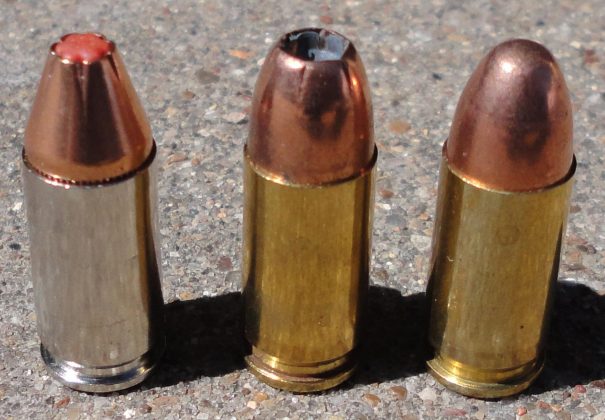 | 9mm Ammo | |
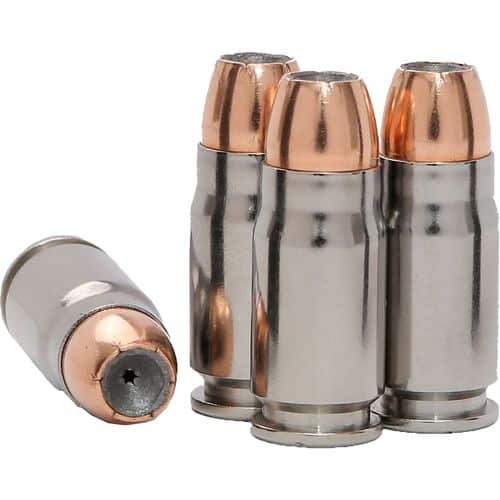 | .357 SIG Ammo |
357 SIG vs 9MM – Conclusion
If life is as easy as doing ballistics comparisons, then it would be a no-brainer to state that the .357 SIG trumps the 9mm. It can send a same-size, same-weight bullet flying at much faster velocities which results to better terminal ballistics. Even the extremely hot 9mm +P+ with the same bullet weight runs about 150 feet per second slower than just the standard .357 SIG load.
357 Sig vs 9MM Comparison More than Ballistics
Life isn’t ever going to be that easy though, and superior ballistics doesn’t necessarily mean a particular cartridge/caliber is better than another. Why, if that were the case, then I say we get rid of all types of ammo save the almighty .50 BMG, gather them and burn them all. Let’s all just get ourselves a .50 BMG rifle, gather around the bonfire with all the burning lead flying everywhere and sing Kum-ba-yah to high heavens.
I’m not dismissing the .357 SIG. I think as a concept, it works great. In a perfect world where money is never going to be an issue, I’d tell anyone who asks for a recommendation to buy any handgun chambered for this round if only to give it the chance it deserves.
I think the fine folks at SIG Sauer nailed it when they designed this cartridge. I love my Taurus 689 in .357 magnum. I’d love to have a subcompact semi-auto in .357 SIG. I’d love to have a Coonan in .357 magnum too. Ahhh so many guns, so little time.
But I digress.
357 Sig vs 9MM Winner?
So, for this handgun caliber showdown, it is with much sorrow and misery that I have to say that for all intents and purposes, the time-tested, relatively weaker but more readily available and more affordable 9mm wins over the .357 SIG.
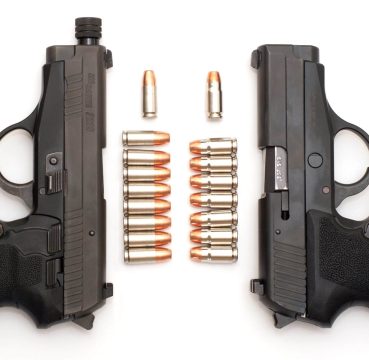


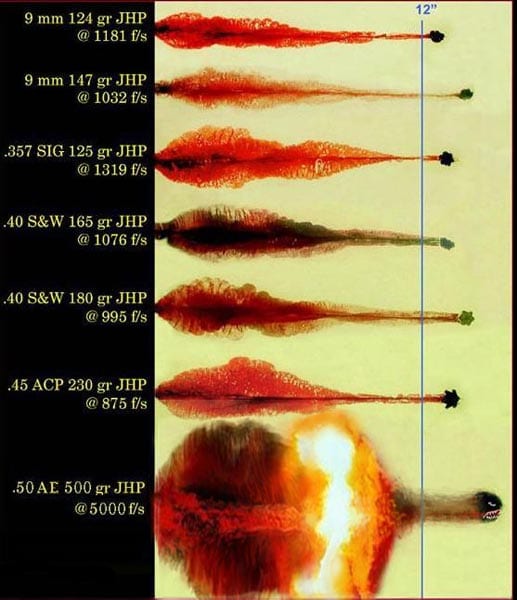










15 Responses
I own several S&W .38 revolvers and have shot them for 50 years. I also own a Glock 9mm, and just bought a Taurus 905, a 5 shot revolver in 9mm, mainly because of the availability of ammo and the low cost. I like to shoot often, and have had to gravitate to reloading for the .38. Based on my long association with firearms, I feel the 9 and 38 will both do the job of close quarter self defense. The wadcutter bullet in .38 has a sharp cutting edge that will punch clean round holes in an attacker. Since most defensive firearm incidents involve only 2-3 shots, I think the revolver is more than adequate, and much better for those new to firearms or those who cannot or haven’t the time, money, opportunity, or interest in shooting alot. A weak grip on an semi-auto will result in a jam. It takes a fair amount of practice to get this worked out. Other than that, a modern 9mm such as the Hellcat is an excellent choice for self defense.
As you stand the 38 special cartridge next to the 9 mm, it appears larger and like there must be more powder behind the bullet. If both are using the same smokeless powder, why isn’t the 38 special more powerful?
The Henry Lever action repeating rifle chambered in 357 Mag also fires the 38 Special. I also own the S&W 686+P and simply put, I would not trade it for any other hand gun. 357 mag and 7 rounds.
Andrew,
Thanks for commenting. Versatility as I framed it in this article doesn’t just pertain to bullet and load types. Even the 9mm has several different loads and bullet types available to it, whether you’re looking to buy factory ammo or load your own. It also pertains to shooting platforms available to each particular caliber.
Indeed, if there is one good reason why the 9mm is being used by many different countries’ military and law enforcement agencies, it’s because of its versatility. I recommend you read the article again (more carefully the second time) just in case you missed my point. Thanks again.
-Mike
Lol , how can you say 9mm is more versatile then a 38 special? Did you even do any research before you wrote this article. Hands down 38 special is the more versatile cartridge. Different power ranges ,bullet weights ,and bullet shapes (thanks to being in a revolver).
I own and shoot several 9mm pistols and a few S&W revolvers in various sizes. I agree with this article and the follow up Q&A. Firepower definitely favors the semi-auto in 9mm, but I still like a high quality revolver as well. Thankfully we can own both. Great article.
Thanks, Wayne. Much appreciated.
Karl,
As far as quality/workmanship you can’t go wrong with either being they’re both S&W Performance Center models. However if you’re looking to buy a revolver you’d be missing out on a lot of things if you bought the one chambered in 9mm. Go for the Model 19 chambered for .357 mag/.38 Special +P, you won’t regret it.
Unless you have a really good reason to want to shoot 9mm in a revolver, I’d recommend a good semi-auto because that’s the platform the cartridge was built around (more capacity, faster reloads). Revolvers by comparison usually only have room for 6 rounds.
Chris wrote this article, you might want to check it out:
https://gunnewsdaily.com/9mm-vs-40-sw/
Regards,
Mike
Mike..I’m a 63 year old novice to handguns, but I wanted to get a gun for home protection & self defense…and I want a S & W revolver. Which of these two would you recommend:
Performance Center Model 19 Carry Comp (357/.38 Special +P)…or the
Performance Center Model 986 (9mm w moon clips)? And btw, thanks for the article above.
Let me look into that, but in the meantime here is an article you might like that features the S&W 686 – FIRE!: 5 MOST DANGEROUS REVOLVERS ON PLANET EARTH
I do not see how ANYONE could find bias in this fine article! Great job!
Wayne
Disappointed at the characterization of the Moro Juramentados. They were fighting to defend their country against a foreign aggressor nation. U.S. were the bad guys in that one.
outstanding comparison… very detailed for the novice consumer
Thanks, Mike. Glad you liked it. -Mike